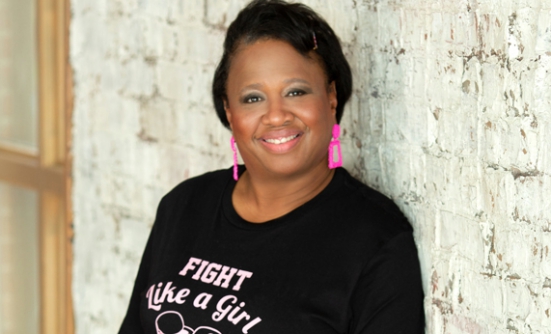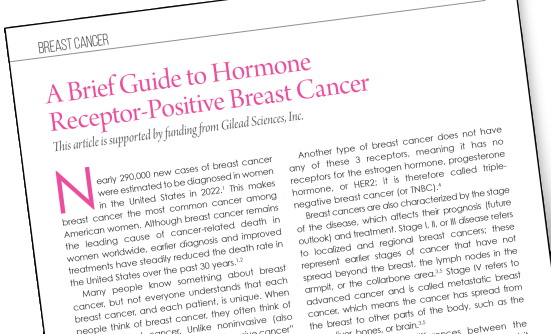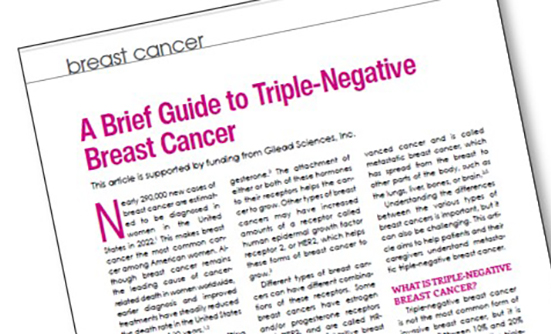More than 200,000 women in the United States will be diagnosed with breast cancer in 2020. It is the second-leading cause of death in women, and the most common form of cancer for women around the world. Due to diagnostic and treatment advances, breast cancer survival rates have improved in recent years, but regular screening is crucial to finding breast cancer early and when it is most treatable—even when it is still too small to feel in a physical examination. One of the best screening tools for breast cancer is a mammogram, a type of low-dose x-ray of the breast tissue that yields an image used to make a diagnosis.
Current guidelines recommend that most women between 50 and 75 years of age have a mammogram every 1 or 2 years to increase the likelihood of discovering cancer early. As a result, more than 39 million mammograms were performed in the United States in the past year. Each of these images must be carefully analyzed by 1 or more radiologists—physicians who interpret diagnostic images—before cancer can be ruled out, or before further testing is recommended.
This large number of mammograms, and the number of physicians required to ensure careful screening, place a heavy burden on healthcare systems to deliver timely and accurate results. In addition, while mammograms, and the physicians who interpret them, are very good at detecting cancer, they are not 100% accurate. False negatives or false positives are not rare occurrences.1,2 These misdiagnoses are of concern because a false positive could lead to unnecessary treatments, including surgery and powerful cancer drugs, and patient anxiety. The consequences of a false-negative determination could be severe, as it may create a mistaken sense of comfort and allow time for the cancer to grow and spread to other parts of the body.
With all of these factors in mind, researchers wanted to see whether new developments in artificial intelligence (AI) could be useful in the diagnosis of breast cancer. AI is used to describe machines that are programmed to simulate human intelligence. These AI machines are “trained” to think like humans, to learn, and to solve problems. We already encounter AI in our daily lives when we use speech-activated devices such as Alexa to give us the weather report or ask Siri to help manage a busy calendar. Although this technology is still in its infancy, it is certain that, in years to come, AI will enter our lives through even more applications, including healthcare. Proponents of using AI in medicine argue that it has the potential to ease some of the pressure on physicians, deliver cancer screening more widely to underserved areas, and improve the ability of the human eye to spot cancers in their earliest stage of development.
An international team of physicians set out to investigate how well an AI tool developed by Google’s DeepMind Technologies would perform at detecting breast cancer compared with human radiologists. The team conducted the research, funded by Google, in the United States and the United Kingdom, and published their findings in the January 2020 online issue of the journal Nature.
The researchers used the AI tool to analyze 500 mammograms and then asked 6 (human) radiologists to review the same images. When results were compared, although the radiologists performed better in some cases, the AI performed better in others, especially in finding invasive cancer. In the end, the AI was more accurate overall and reduced false positives in the United States by 5.7% and reduced false negatives by 9.4%.
What do these results mean for women and the future of breast cancer screening? Although screening using AI is not yet available, it has already created some controversy. Critics have suggested that with wide use of the new technology, the likelihood of being misdiagnosed could actually increase because AI is somewhat better than humans at detecting tiny abnormalities in an x-ray. Some also fear that the skill and experience of the radiologist would become secondary and minimize their importance in treating patients. Despite these concerns, AI does have potential to provide value. In addition to reducing the overall number of false negatives and false positives, perhaps the most significant benefit is that AI could speed up the diagnostic process and provide women with their test results much sooner than the 1- to 2-week wait that is now typical. This would be a welcome change for many patients and their families as faster access to that information would allow women to begin treatment plans—or to breathe easier—in a much shorter time than in the past.
References
- McKinney SM, Sieniek M, Godbole V, et al. International evaluation of an AI system for breast cancer screening. Nature. 2020;577:89-94. https://doi.org/10.1038/s41586-019-1799-6. Accessed February 21, 2020.
- Elmore JG, Jackson SL, Abraham L, et al. Variability in interpretive performance at screening mammography and radiologists’ characteristics associated with accuracy. Radiology. 2009;253;641-651. https://pubs.rsna.org/doi/full/10.1148/radiol.2533082308. Accessed February 21, 2020.















